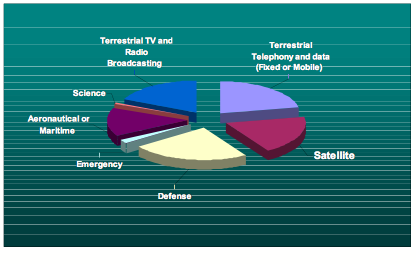International Regulation - ITU
DID YOU KNOW?
The ITU is a club of more than 192 countries who together have been regulating the use of radio spectrum worldwide for around 145 years?
The International Telecommunication Union or ITU is the United Nations institution whose Member States act together as global spectrum co-ordinators. The ITU has allocated parts of this spectrum range to specific categories of services as shown below and has identified those frequencies best suited for transmissions via satellite.

While some bands are exclusively dedicated to satellite transmission; most are shared with terrestrial wireless services. Overall, satellite is one of many users of radio spectrum.
The ITU ensures an international dimension to frequency allocation and coordination which is wholly appropriate and indeed necessary to the satellite sector, whose business plans are based on securing markets in different countries and regions of the world, often with one or more satellites.
When regional frequency allocations change or move away from what has been decided by the ITU, this can expose satellite operators to serious risks as they cannot re-program satellites that have already been launched to use different frequencies. Regional spectrum policies must therefore be in sync with the international dimension as well as national or regional policy if they are to be neutral towards all legitimate users.
Presentation: Satellites & the ITU
Publication: Satellites & Spectrum: The Right Wavelength
margin-bottom: 0pt; text-align: center; direction: ltr; unicode-bidi: embed; vertical-align: baseline;">Satellites & The ITU